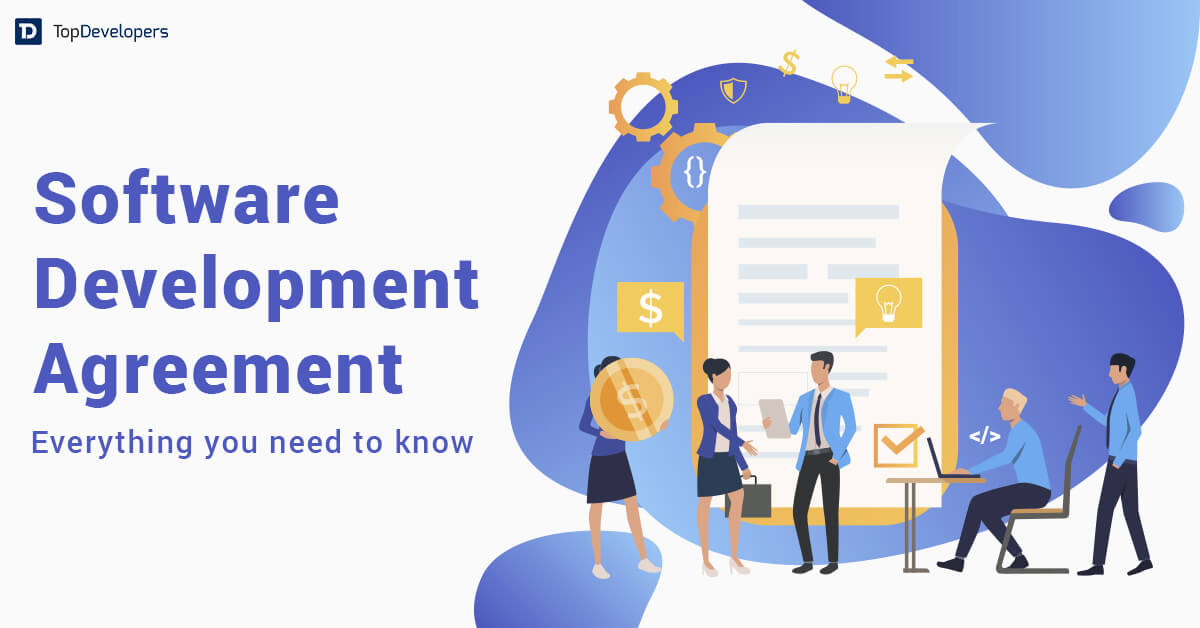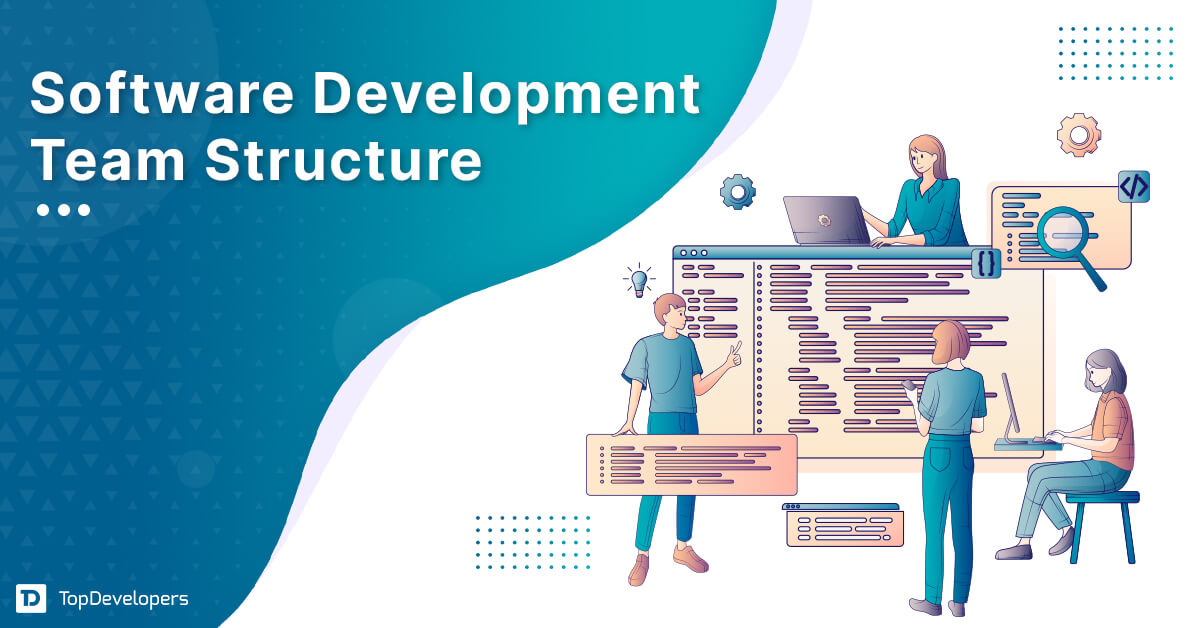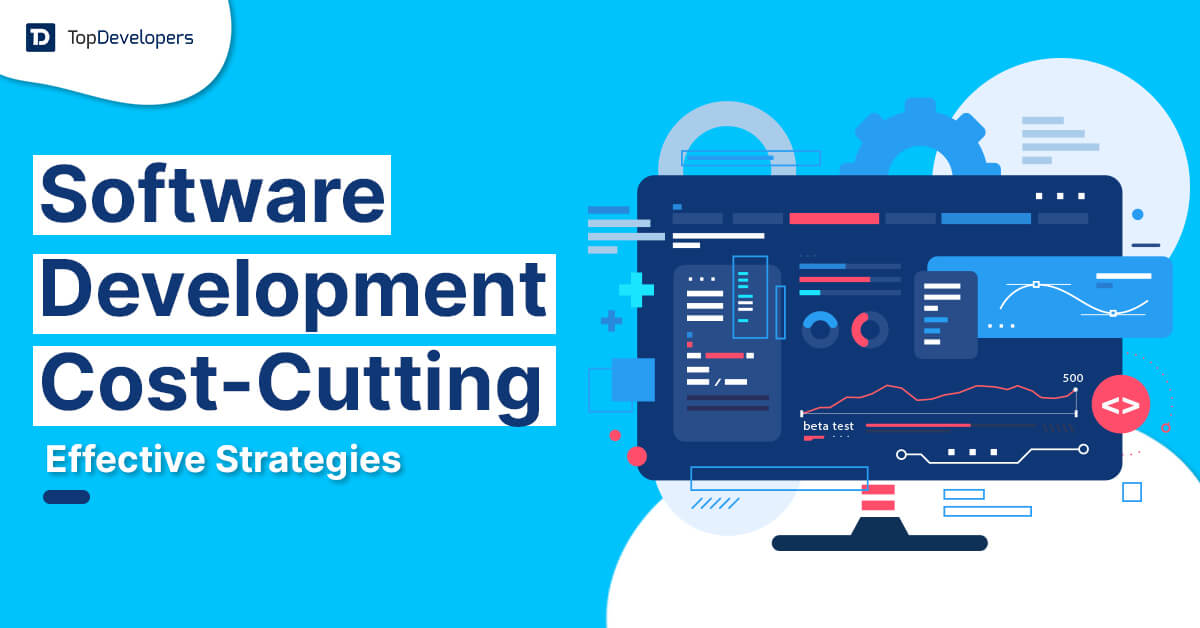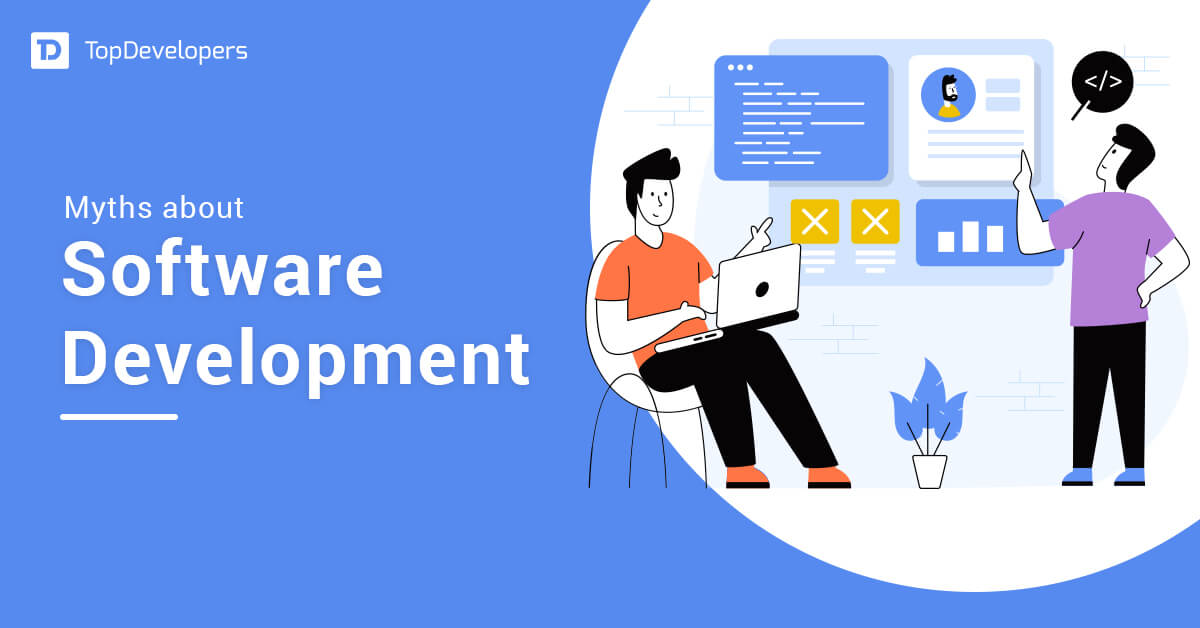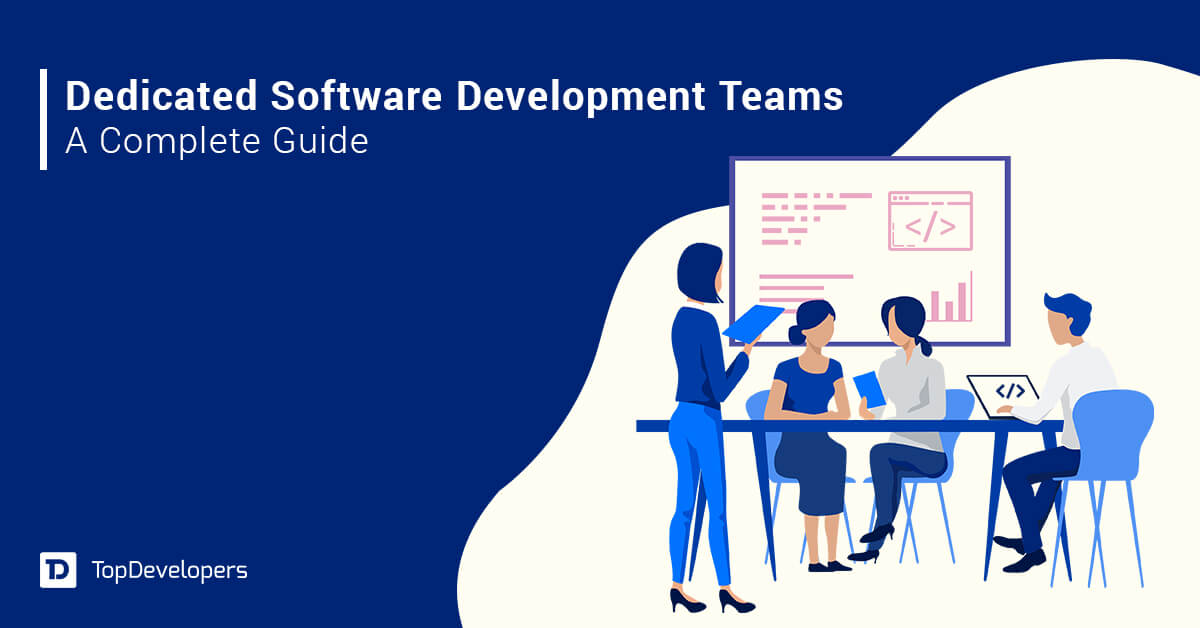
A software development plan or SDP is a document that describes the outline and strategies to build a software product. You can consider this as a roadmap that helps the software development team to work efficiently and in the right direction with the right mindset. The software developers will follow the SDP throughout the essentials of the project development lifecycle, which is the backbone of any digital product execution. Hence, for any digital tool, following the development process as per the SDP cannot be ignored.
Thus, you need to pay utmost attention to creating a software development plan that explains the project goals, the resources required, the time it may take as an end product, any special tasks, and finally any challenges that you may face during the development process.
To build an ideal Software Development Plan, you need in-depth knowledge about the software development process, project requirements, management, and technical know-how because that way you can understand how to prepare the plan better. Also, your acquaintance with the software development life cycle will benefit the software development team in building a foolproof and objective-specific product in the end.
Table of Contents
- What Is the Need for a Software Development Plan?
- Ten Questions to Decide Your Software Development Plan
- The 16 Steps to Create a Software Project Plan
- Defining your project workflow
- Defining project scope
- Constraints and risks
- Estimating workload through workflow
- Estimation and budget
- Gathering workforce resources – the software development team
- Gathering technical resources – tech stack for software development
- Milestones and communication
- Creating a timeline
- Forecasting resources
- Leave the room for changes
- Transition to service
- Design, develop, and testing – MVP
- Execution and deployment
- Post-project reviews
- Full-fledged product after MVP
- Support and maintenance
- People also asked regarding Software development Plan:
- What is the significance of having a software development plan (SDP)?
- To what extent should the details of a software development plan be elaborated?
- In what ways does the Agile methodology shape a software development plan?
- Which party bears the accountability for the software development plan?
- At what frequency should the software development team consult the plan?
- What influence does a software development plan have on stakeholders?
- What potential hazards are associated with the absence of a software development plan?
- What pitfalls should be circumvented in your Software Development Plan (SDP)?
What Is the Need for a Software Development Plan?
Creating a software development project plan is an indispensable step toward building any software product because it acts as a guiding torch to developers. This important document encompasses the direction, scope, and vision of the project to ensure that every concerned person is on the right track.
It is also called a software developer roadmap because it is a strategic tool capable of influencing the project’s success. Here are the reasons why you need this essential document:
- Successful project execution: SDP lays out the strategic approach to the product. It details the methodology and practice to adopt for smoother execution.
- Clear communication: the document facilitates clear and flawless communication among all stakeholders ensuring that all are on the same board.
- Manage scope: the SDP defines the software project scope and thus helps manage expectations and prevent misunderstanding.
- Fix milestones: the document can provide a detailed schedule of milestones and deliverables. This is crucial to maintain momentum and focus.
- Controlling budget: the document of the software development plan outlines the fiscal requirements and risks. This helps keep an eye on the expenses.
- Monitoring performance: the software development project plan includes metrics and benchmarks to monitor the performance of developers and development methods.
- Ease of record: the software development plan makes sure that all aspects of the project are neatly documented so that it’ll be easy to perform updates and maintenance.
- Standardization: the roadmap for software development ensures compliance and industry standards to satiate the legality and quality.
- Guage risks: the software project document helps you with contingency planning to tackle unforeseen events and thus minimizes the impact of any mishaps.
- Scope for improvement: the document that has project management for the software development plan helps you carry out SFI – Scope For Improvement because it’ll gather regular feedback and inputs from all the concerned people/departments.
Ten Questions to Decide Your Software Development Plan
Creating a software development project plan is a complex process. It is recommended that you go through a decent software development guide and then ask yourself ten basic questions. The knowledge about how a solution is developed plus these basic questions will help you craft an impeccable strategy for software development.
A questionnaire to move a step closer to building an effective SDP:
- What are my primary objectives and goals for the software project?
- Who are my target users, and what are their needs and pain areas?
- What are the key features and functionalities that your software must have?
- Are there any particular technologies, tools, or platforms that your software should be compatible with?
- What are the constraints and limitations like budget, product launch date, and resources?
- How will your software’s success be measured after it is deployed?
- What are the potential risks associated with your project development? Also, how will they be mitigated?
- How will your software project adhere to compliances?
- What is your projected timeline for the SDLC, including testing and deployment?
- How will you handle software maintenance and updates?
By now, you are on the verge of making up your mind to create a foolproof software development plan document to make sure that the end product aligns with your business objective and project scope.
Let us see a research-based 16 steps to create the SDP document.
The 16 Steps to Create a Software Project Plan
Neglecting a careful software development plan can harm your project because, without a clear and detailed SDP document, the project would suffer aimless team objectives which will again end up in inconsistent work and missing the deadlines. Poorly crafted software development plan documents can also result in inadequate resource allocation resulting in budget overruns and flaws in deliverables.
Hence, we have curated a 16-step software development plan to avoid a lack of comprehensive risk management strategies that would otherwise make projects vulnerable to unforeseen issues and even project failure.
Learn these steps carefully to execute a foolproof SDP document –
Defining your project workflow
The software development plan needs a clear roadmap that outlines the journey from ideation to an executed product. This workflow must-have details of each stage like how to gather requirements, design the tool, the core development, software testing, and bugs finding, and finally deploy the digital product. Assigning clear roles and responsibilities in every stage such as assigning developers, QA executives, UI/UX designers, and even PMs will create ownership and keep the software project moving smoothly.
Defining project scope
Once you define the project workflow the next step is to define the software development project scope. Consider this as a roadmap and boundary for the software developer to include features and functionalities of the product. It is very essential to neatly define what your software will do. Avoid scope creep wherein additional features are included in the middle of the SDLC process. You must document any inclusion, exclusion, or limitation from the outset because it will help you manage expectations with users/stakeholders and will ensure that everybody is on the same board.
Constraints and risks
Every software project will face some limitations and therefore, the software development plan should mention the constraints and risks so that developers and stakeholders are aware of them and can then take precautionary measures. Such risks or constraints could be related to budget, resource allocation, timelines, deliverables, market change, and consumer demand change. Besides these, the document for project management for software development should also mention technical restrictions and limitations or dependencies. This will help in brief software development risk management.
Estimating workload through workflow
When you outline the software development workflow, you can also estimate the workload for each stage. It includes breaking down the software project into smaller tasks that are manageable. The writing of SDP document would include an estimated time assigned to every task that development teams need to follow for the entire software development process to ensure that the final product meets the objectives with minimum or no escalations.
Estimation and budget
Estimation and budget are essential parts of software development plan documentation. It should address both the time and budget to complete the project; nevertheless, you must take care of the workflow breakdown and this part should translate that estimation into a practical timeline with clarity in milestones. You need to consider factors such as the size of the developers’ team, resources, and software development tech stack.
Gathering workforce resources – the software development team
The software development project plan should mention how to assemble the right team for software development for the successful completion of the project. The plan may include developers with expertise in programming, QA executives with eyes for details, and UI/UX designers who understand basic ergonomics. The plan should also consider the communication channels to stay updated about the project’s progress.
Gathering technical resources – tech stack for software development
Human resources are essential and so are the tools that help you build your project. The software development plan document needs to mention the tech stack or technical resources required for the project execution. It is also essential to decide on the software development models you are likely to adopt as per your project’s complexity and objectives. Hence, your plan should mention programming languages, frameworks, libraries, models, and other related tools that the software development team would utilize to customize the product and meet your business objectives. Check for the compatibility, durability, and licensing required.
Milestones and communication
Clear milestones should be mentioned in your SDP documentation because that way you will be able to track the progress. SMART – specific, measurable, achievable, relevant, and time-bound milestones should be mentioned clearly. Regular communication is essential and you should mention it with tools and frequency.
Creating a timeline
Though you mention timelines or milestones in the rest of the sections, focusing solely on creating a timeline should be a separate section wherein you build workload estimation and milestones accordingly. The plan must also include potential dependencies among tasks and buffer periods to address unpredicted concerns. You may utilize some of the project management tools available on the market to visually present the entire blueprint.
Forecasting resources
Though your document of software development plan mentioned predefined objectives and resources needed to execute the product, it is equally essential to accept that there might be requirements arise in throughout the SDLC. Hence, your SDP document should incorporate strategies to meet resource needs in the future. it may involve timely reassessing of the workload as the SDLC progresses and also identifying additional tech skills/tools that might be required later.
Leave the room for changes
This section is one of the most ignored factors in a software development plan creation. It is essential to acknowledge the future scenario wherein you may notice evolving needs in the project. Thus, the typical software development plan must incorporate scalability to accommodate changes, if any. This may involve mentioning a possible change management process outlining how new needs or alterations will be implemented after review and approval.
Transition to service
A software development plan document is a holistic approach to the entire process and its pre and post-tasks. That said, the plan should also address the transition to service to ensure the smooth execution of the product to the end users. Hence, a unique SDP document would include user guides and training materials for the staff or deployment strategies to ensure that the product meets the purpose. You may also need to consider ongoing support and maintenance.
Design, develop, and testing – MVP
An iterative development approach is essential for many software building. It may involve opting for a minimum viable product – MVP. Thus, the document should mention the core functionalities first, and the plan must include the outline of the overall SDLC along with testing phase for MVP. Early user feedback and scope to improve the product later could be a part of this section.
Execution and deployment
Heading toward the last stages of the software development planning is the execution and deployment phase wherein putting the plan outline into action is the core. Considering everything such as workflow, deliverables/milestones, and overall timeline, you need to jot down everything along with communication and collaboration methods among team members. This phase ensures that the software is released to the targeted users with ease.
Post-project reviews
The project is completed and it is now time to take post-project reviews to learn and improve it based on them. Reviews will assess the software’s success and match it with the goal outlined in the project scope. It may include analyzing and sticking to the timelines and budget. You may be able to identify the gray areas and scope of improvement in this phase.
Full-fledged product after MVP
The purpose of creating a minimum viable product is to check whether you are on the right track. If the initial MVP works well, the plan should move forward to becoming a full-fledged product. It may include additional features/functionalities based on feedback and inputs from users and stakeholders. The existing MVP is then turned into a high-quality user experience product.
Support and maintenance
No software development and the end product are perfect as it requires timely checks, updates, and maintenance. The standard software development plan outline should also include support and maintenance as it is required regularly. Addressing bugs, users’ concerns, improving features, and ensuring security time to time comes under this section. Most software development companies offer support and maintenance at extra charge and it is worth going for it.
Conclusion
If you follow these steps for a software development project plan, you will have a foolproof roadmap to success. Careful and strategic planning will foster clear communication and render a perfect sync and collaboration with your software development teams sitting anywhere in the world.
Once you are prepared with this plan, you can contact software development companies and present it to make them understand your ideation and concerns before hiring the right one. The software development plan will work as a guide to building a customized and quality product that meets your project goal and business needs.
People also asked regarding Software development Plan:
What is the significance of having a software development plan (SDP)?
A software development plan acts as a roadmap that includes outlined steps needed to execute your software meeting your ideation. The SDP ensures that the entire software development life cycle (SDLC) is efficient and avoids flaws.
To what extent should the details of a software development plan be elaborated?
The degree of detail in the software development plan must reflect the complexity of the product. Simpler software may have a high-level overview, whereas complex projects must have granular breakdowns and explanations.
In what ways does the Agile methodology shape a software development plan?
If you use agile software development methodology, your SDP document must be adaptable – in other words, it should allow the adjustments and needs that arise throughout the development period.
Which party bears the accountability for the software development plan?
All concerned persons play a crucial role in SDLC. But dedicated software development team holds the primary responsibility for implementing the software development plan. They are accountable for making it sure that the tasks are completed as per the SDP document.
At what frequency should the software development team consult the plan?
The development teams may consult or refer to the plan quite regularly. However, how often it should occur depends on the project’s complexity. It is essential to review and adjust the software development plan as required to stay in the right direction.
What influence does a software development plan have on stakeholders?
Transparency is one of the most essential factors that influence the overall plan of software development. SDP fosters transparency as concerned professionals will understand the project goals, deliverables, and resource allocation.
What potential hazards are associated with the absence of a software development plan?
If you don’t have a strategic software development plan, you are at a stake of losing a lot. Your project will be vulnerable to scope creep wherein features and functionalities of your product won’t stick to the objectives or goals. In serious cases, the project may fail.
What pitfalls should be circumvented in your Software Development Plan (SDP)?
You need to avoid unrealistic objectives, timelines, goals, and deliverables. You need to hold your expectations if they are too complex and dreamy. Be practical and consult the business and technology consultants to keep your product feasible.
 Avantika Shergil
| May 23, 2024
Avantika Shergil
| May 23, 2024
Avantika Shergil is a technology enthusiast and thought leader with deep expertise in software development and web technologies. With over 8 years of experience analyzing and evaluating cutting-edge digital solutions, Avantika has a knack for demystifying complex tech trends. Her insights into modern programming frameworks, system architecture, and web innovation have empowered businesses to make informed decisions in the ever-evolving tech landscape. Avantika is passionate about bridging the gap between technology and business strategy, helping businesses build customized software and website, and understand about different tools to leverage effectively for their ventures. Explore her work for a unique perspective on the future of digital innovation.



